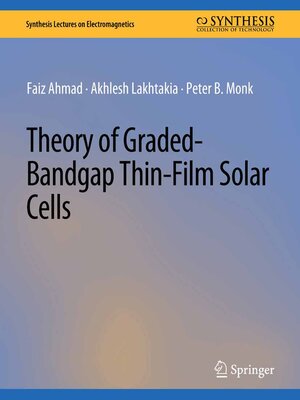Theory of Graded-Bandgap Thin-Film Solar Cells
ebook ∣ Synthesis Lectures on Electromagnetics
By Faiz Ahmad

Sign up to save your library
With an OverDrive account, you can save your favorite libraries for at-a-glance information about availability. Find out more about OverDrive accounts.
Find this title in Libby, the library reading app by OverDrive.



Search for a digital library with this title
Title found at these libraries:
| Library Name | Distance |
|---|---|
| Loading... |
Thin-film solar cells are cheap and easy to manufacture but require improvements as their efficiencies are low compared to that of the commercially dominant crystalline-silicon solar cells. An optoelectronic model is formulated and implemented along with the differential evolution algorithm to assess the efficacy of grading the bandgap of the CIGS, CZTSSe, and AlGaAs photon-absorbing layer for optimizing the power-conversion efficiency of thin-film CIGS, CZTSSe, and AlGaAs solar cells, respectively, in the two-terminal single-junction format. Each thin-film solar cell is modeled as a photonic device as well as an electronic device. Solar cells with two (or more) photon-absorbing layers can also be handled using the optolelectronic model, whose results will stimulate experimental techniques for bandgap grading to enable ubiquitous small-scale harnessing of solar energy.







